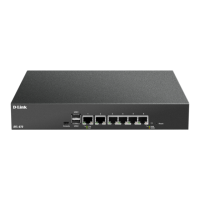3.72. L2TPv3Client
Description
A L2TPv3 client interface terminates L2 (Ethernet and VLAN) tunnels set up over existing IP
networks.
Properties
Name Specifies a symbolic name for the interface.
(Identifier)
IP The IP address of the L2TPv3 Client interface.
LocalNetwork The network on "this side" of the L2TPv3 tunnel.
PseudowireType Specifies if L2TPv3 should tunnel Ethernet or IEEE
802.1Q (VLAN) tagged Ethernet frames. (Default:
Ethernet)
Protocol Specifies if L2TPv3 should tunnel over IP or UDP.
(Default: UDP)
RemoteEndpoint The IP address of the L2TPv3 server.
OriginatorIPType Specifies what IP address to use as source IP in e.g.
NAT. (Default: LocalInterface)
OriginatorIP Manually specified originator IP address to use as
source IP in e.g. NAT.
IPsecInterface Use this IPsec interface to encypt the traffic to the
L2TPv3 server. (L2TP/IPsec). (Optional)
AutoRouteMetric Specifies the metric for the auto-created route
used by the L2TPv3 Client. (Default: 100)
HostName The host name for this L2TPv3 Client. (Used in the
Host Name AVP). (Optional)
RouterID Router ID. (Used in the Router ID AVP). (Optional)
DHCPPassthrough Allow DHCP to pass through transparently.
(Default: No)
NonIPPassthrough Allow non-IP protocols to pass through
transparently. (Default: No)
SNMPIndex Interface index assigned by the system when
persistent interface indexes are enabled. (Default:
0)
MemberOfRoutingTable All or Specific. (Default: All)
RoutingTable Specifies the PBR table to insert the interface IP
route into. It also means that the specified routing
table will be used for all routing lookups, unless
overridden by a PBR rule. (Default: main)
ProxyARPAllInterfaces Always select all interfaces, including new ones, for
Chapter 3: Configuration Reference
232

